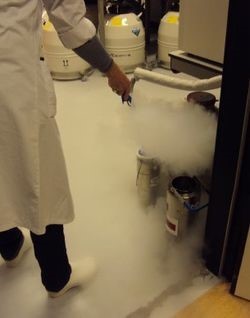Gevaarlijke stoffen
Bekijk hoe Dokterhoe je helpt veilig en gezond te werken met gevaarlijk stoffen.
Hazardous substances
Hazardous substances are substances that can pose a hazard to your safety, your health and the environment. The University Medical Centers frequently work with hazardous substances. Consider, for example, cleaning and disinfecting products, chemicals in the laboratory, glue in the technical department, certain medication in healthcare and cryogenic (cold) gases in the X-ray department.
Hazardous substances are not only about a safe working method, but also about purchasing, transport, registration, storage and waste. On this website you will find basic knowledge about what you can do yourself to work safely and healthily with hazardous substances. And how your occupational health and safety advisor, the umcs and the government support you in this. The information on this website is general, based on local laws and regulations, each umc makes its own additional policy.
What can you do: storage
- Government Guidelines
- General requirements for storage
- Labelling of the infrastructure
- High-risk combinations of hazardous substances
- Drip trays
- Workload
- Stock up to 150 or 250 kg or litres
- Stock exceeding 250 kg or litres
- Explosive, oxidising or radioactive substances
- Different types of cabinets
- Storage of gas cylinders

